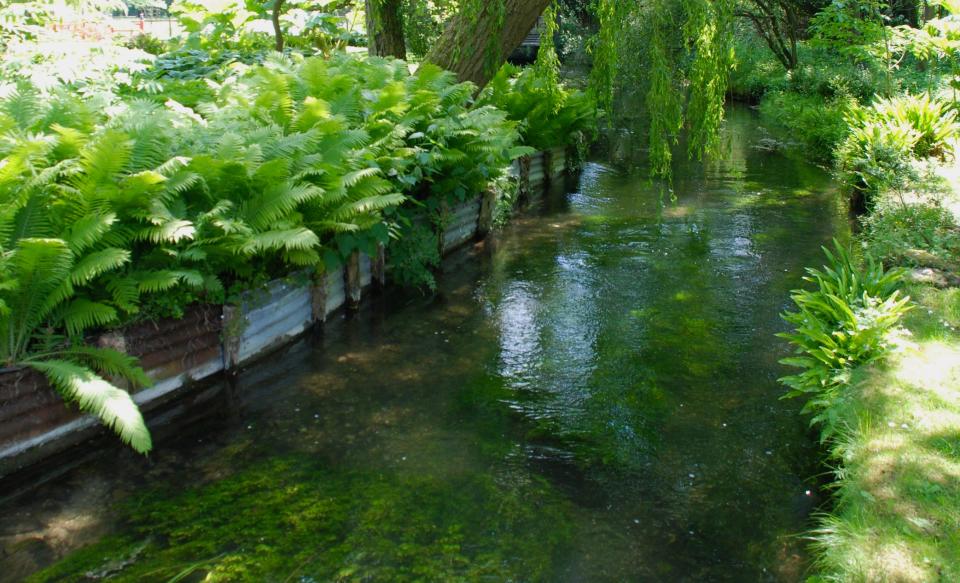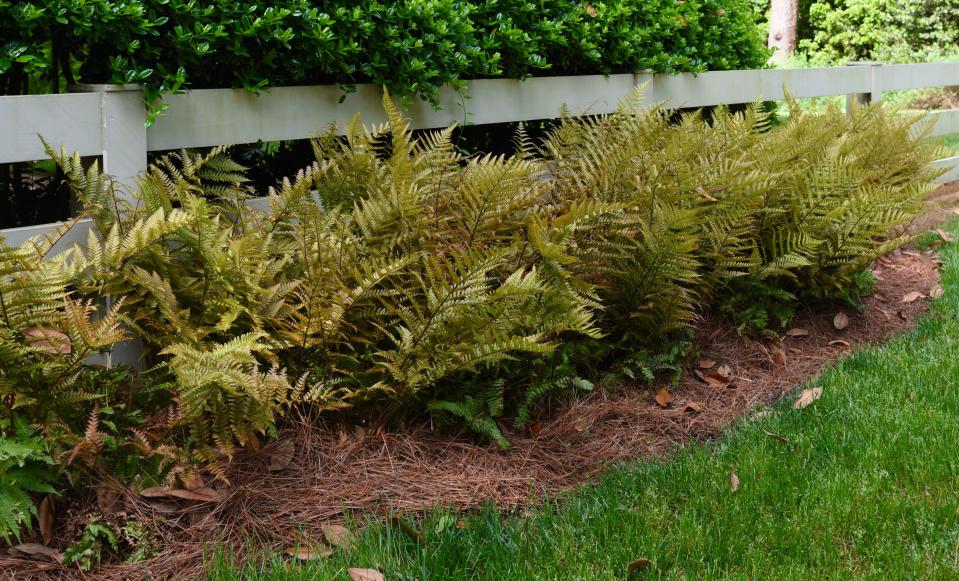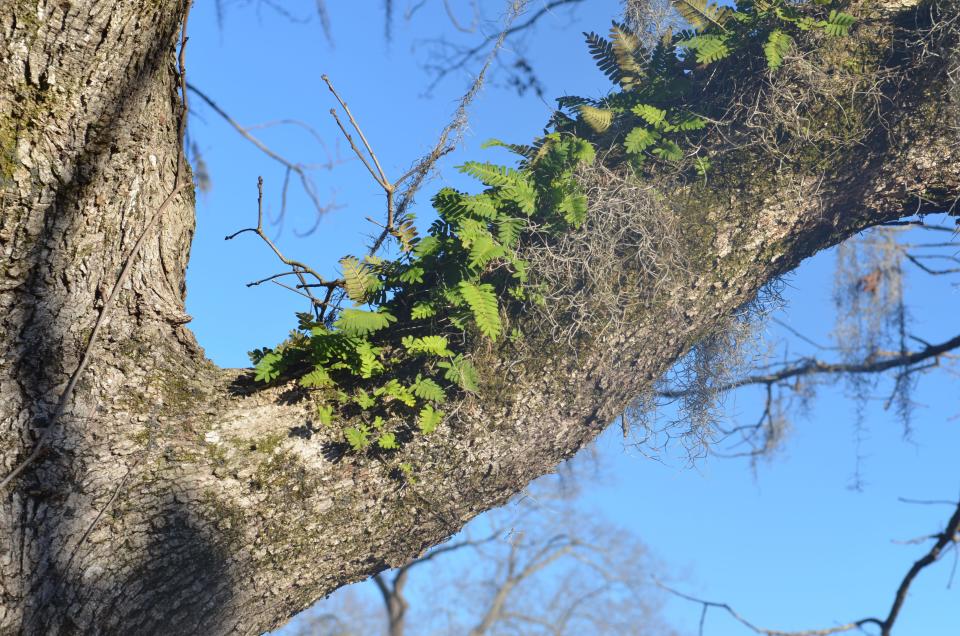Betty Montgomery: Fanciful, fantastic, fascinating ferns
Ferns are the perfect plant to add to a shade garden. They come in all shapes, sizes, and textures and because of the diversity of ferns, there is one that will fit about any garden. Ferns can have a delicate texture like the maidenhair ferns or be coarse and thick like holly ferns. You can have short ones like resurrection fern or large ones like the ostrich fern. Some are glossy, others are dull, some are evergreen while others are deciduous. They come in different shades of green and others turn bronze or yellow in the fall. And, if this is not enough to wet your appetite, the deer do not eat them.

Ferns have been in existence for more than 300 million years. There are so many different species of ferns that they are a unique category of plants. They do not reproduce like other plants. They propagate via spores that are like small dots on the underside of the fronds (or leaves). A single plant can drop millions of spores onto the ground, yet only a few will actually find the ideal conditions to grow.
Most ferns like shade but a few will tolerate more sun. The dabbled shade provided by tree branches provide the best conditions. Think about how they grow in the forest and try to mimic their habitat, using soil that is a loamy with lots of leaf mold and which is both moist and well-drained. Spacing should depend on the type of fern since some are mat-forming and will quickly spread to blanket an area while others are self-contained and can be used as specimen plants among mixed plantings.
Ferns fit in nicely with other shade plants like Hostas, Astilbes, Heuchera, Hellebores and other shade classics. Ferns look great as a background to different brightly colored annuals if you tend to want to add other colors to you shade garden. Begonias and Impatients are shade loving plants that work in nicely with ferns.
I have lots of favorite ferns, it is hard to say which is the best because some are perfect for one area and then another might look best in another location. However, if I had to choose just one, I would probably pick one of the many maidenhair (Adiantum) ferns. I have discovered some Southern maidenhair ferns that will winter over where I live but most are a little too tender for my climate. I love the northern maidenhair and this year I have splurged and bought a new one called 'Bermuda Run' that was found in Bermuda which I bought from Plant Delights. Some people say maidenhair ferns are too hard to grow and are too finicky but if you find the right spot, they do great. They like dappled light and moisture.
Another favorite are the autumn ferns. These ferns are the rage now and for good reason. They are easy to grow and they make a two-foot-wide clump in a short time. The new fronds are a lovely copper color as they emerge and the fall color can be dramatic, depending on which one you buy. ‘Brilliance’, ‘Koidzumiana’, ‘Gold Mist’ are three of the newer ones that boast more color. The other new fern I added this year is ‘Koidzumiana’ which boast brilliant russet red in the fall color. It is supposed to have a more dramatic look than ‘Brilliance’ that I have grown for a few years.

Often when people are walking in the garden in the winter, I am asked about my holly ferns which got its name because of the pointed tips of the leaves. The leathery, shiny-green fronds grow to about 2 -3 feet and add a completely different texture than other ferns. They are hardy in zones 6 to 10 and this past winter when we had 6-degree weather the day before Christmas, mine survived. I will say that it is planted near some rocks that I am sure held some heat that helped them survive.
I saw a fern the other day that I have not grown but looked interesting. It was a Japanese painter fern called ‘Crested Surf’. It is similar in color to a traditional Japanese Painted Fern, but the tips of the fronds are double crested. It is said to be vigorous and a little taller variety that would fit into the middle of the border. It is a Proven Winner plant that I will have to try one day.
There are so many ferns that I cannot mention them all but I have to mention Christmas ferns (Polystichum acrostichoides) because they are a staple in my garden. They are adapted to a wide range of conditions, from dry to moist, and are hardy to Zone 3. The fronds grow one to two feet tall and are dependably evergreen. However, during the winter months the fronds tend to lie flat on the ground. Few hardy ferns have this beautiful deep, glossy green foliage. You can see them growing along the side of the road on steep shady banks in damp places. I use the frons in flower arrangements all the time and I am not sure what I would do without them.

One last thing about ferns, a friend told me once when planting ferns, if you have an old rotten log in the woods nearby, put a small piece in the bottom of the hole when planting. This gives the fern something to hold onto. I have done this for years and I think it does help get them started. And if you want to dived ferns, I just cut right through the center of a larger plant and the 2 halves will sit for a while as they put out new roots and then they do just fine.
This just begins to touch on the many different ferns that are grown. Start by visiting a garden with ferns displayed or a garden center where they specialize in shade plants and you will be amazed by the array of wonderful ferns that will add beauty to any shade garden. Be sure to check the hardiness of the fern you purchase and make sure it will grow in your area and that it is not a ‘house plant fern’.
Betty Montgomery is a master gardener and author of “Hydrangeas: How To Grow, Cultivate & Enjoy,” and “A Four-Season Southern Garden.” She can be reached at bmontgomery40@gmail.com.

This article originally appeared on Herald-Journal: Ferns are the perfect plant to add to a shade garden. They come in all shapes, sizes, and textures

